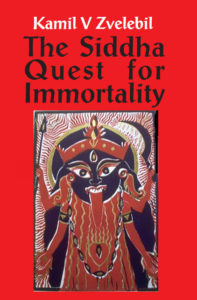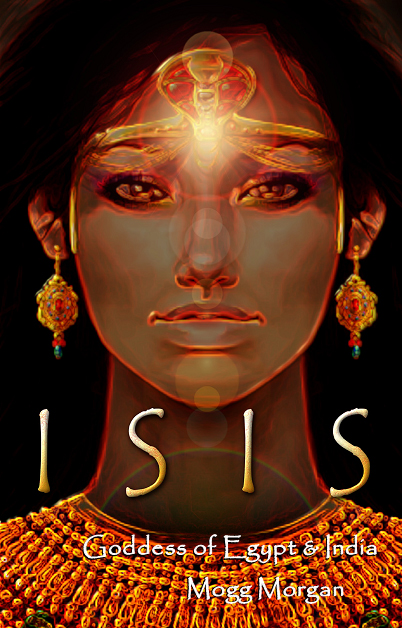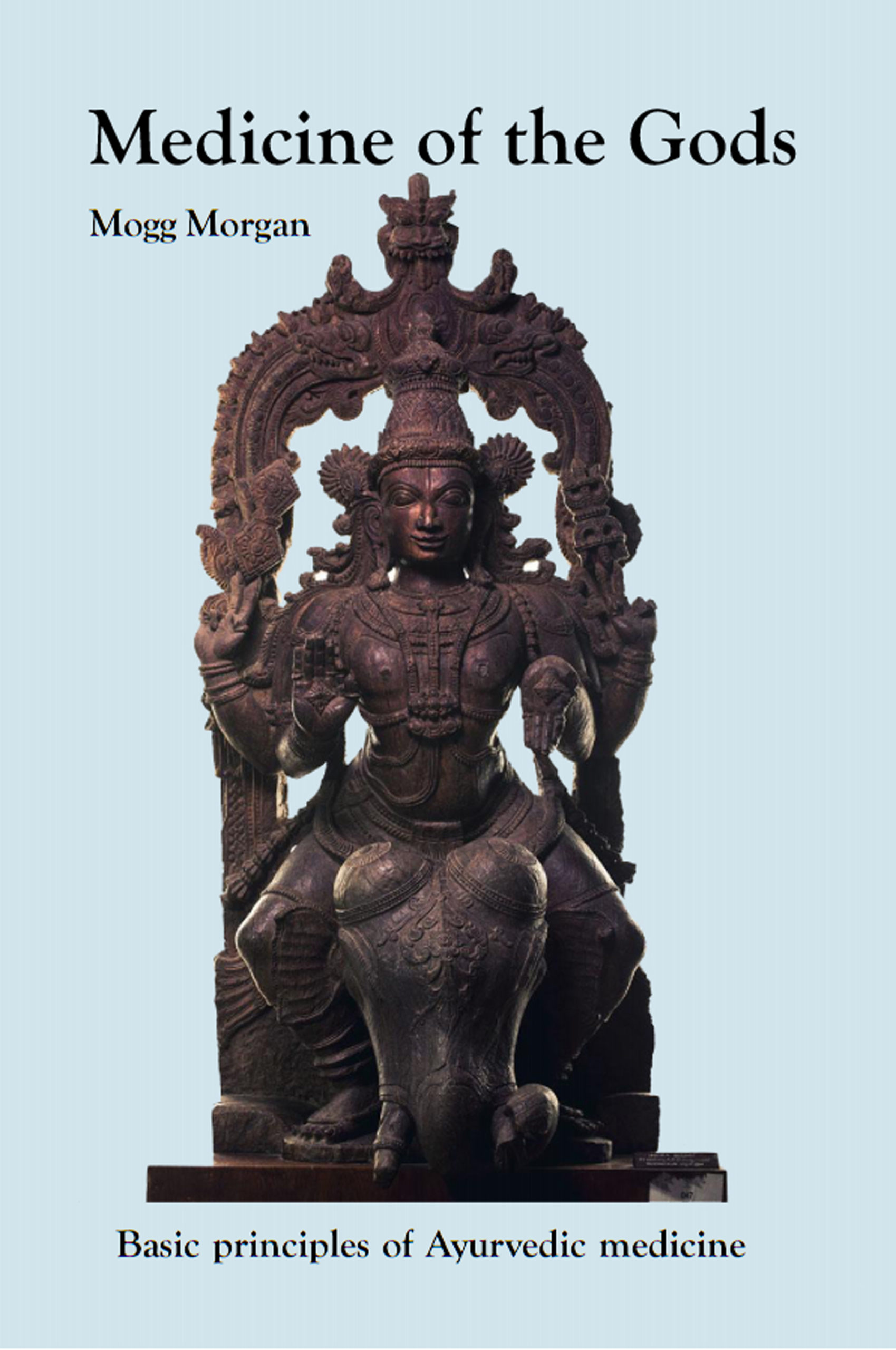Kamil Vaclav Zvelebil

Click HERE for UK edition £20.00+p&p
Click HERE for USA/AUS editions $30.00+p&p
Siddha Quest for Immortality
Kamil Vaclav Zvelebil
Format: Softcover
ISBN: 1869928431
£20.00/US$30.00
Subjects: Ayurveda/Tantra.
–
In South India there is a society where priests and lay people claim supernatural powers. Where a sophisticated medical system underlies a quest for physical longevity and psychic immortality. And where arcane and sexual rituals take place that are far removed from the Brahmanic tradition.
That society is the Tamil Siddhas. In the Siddha Quest for Immortality world Tamil expert K Zvelebil offers a vivid picture of these people: their religious beliefs, their magical rites, their alchemical practices, their complex system of medicine, and their inspired tradition of poetry.
In the Poets of the Powers, Zvelebil introduced English speakers, for the first time, to the astonishing power of Siddha writing. The Siddha Quest for Immortality includes many newly-translated examples of poetry that is deeply religious but not without humour. But physical longevity was also central to Siddha belief, and fascinating chapters on Siddha medicine describe routines by which one can maintain health, and tell how drugs are created from such varied ingredients as cowdung, human urine, honey, oil, and milk.
Part of a Tantrik-Siddha Ritual
‘In the centre of a ritual circle…sits a chosen woman, completely naked, who symbolizes Devi, i.e., Sakti…caste or community is of absolutely no importance in the selection of this woman…This Sakti, thoroughly washed and perfumed all over her body with various perfumes sits on a sort of pedestal with widely spread legs so that her yoni (vulva) is well visible. The leading Siddha will kiss the yoni, and bless various non-vegetarian foodstuffs through the contact with the yoni by touching and rubbing with them the vulva of the Sakti. Then these offerings are distributed among the participants and consumed…’
The Siddha Quest for Immortality
‘While the non-Siddha proclaims that, in order to escape the wheel of birth-and-death the only course open to man is the attainment of spiritual freedom crowned by physical, bodily death, the Siddha maintains that one must overcome physical death in this life itself and ‘live forever’…the great work that lies before man is to purify one’s body and sanctify one’s life, and integrate the two…into one eternal monad, so that body and life become identical.’
The Poets of the Powers
‘Siddha writings are at once most thrilling, even sensational but at the same time the darkest and only very little-known texts in Tamil. They represent a complex and provocative puzzle: flashes of stunning intuition, knowledge, even deep wisdom as well as results of effective practice seem to be mixed with incredible naivete, hardly acceptable superstitions, and dark and amazing claims.’
Plagiarists and impostors?
‘Even Indians themselves, when raised on the niceties of early twentieth century English or Anglo-Indian culture, described the Siddhas as “plagiarists and impostors”, “eaters of opium and dwellers in the land of dreams, their conceit knowing no bounds.’
Siddha Iconoclasm
‘You begging bullocks!
In ochre robes,
with matted hair,
with water-vessels,
rosary-beads and walking sticks,
you have forsaken your women
and roam about the country wide and large
begging for a grain of boiled rice!
Idiots!’
Further extracts below:
Extract
Foreword
The Tamil Siddhas cannot be regarded as one homogenous ‘movement’ or ‘school of thought’ manifesting a unified, well-defined, uniform ideology. A great number of elements have entered into their thinking, some of them pan-Indian, some of them apparently specifically South Indian or Tamil. On the other hand, their overall ideology has, of course, several basic doctrinal tenets in common. As we shall see, some of these tenets are in amazing correspondence with the most recent developments in modern physics of post-relativity and quantum theory era. The schema of dense and subtle matter is one of those tenets: according to ultimate Siddha thought, subtle matter constitutes the inner body of man; matter is nothing but crystallized energy, and a manifestation of infinite and universal mind (‘subtle matter’ reappears in the theories of physicists of our day). An accomplished Siddha is someone who has learned to harmonize his awareness with this subtle (sub-atomic?) matter of which he is composed. The Siddha alchemist can live in the mode of constant appearance and disappearance, manifestation and dissolution, of subtle matter and energy; and all matter forms a continuum. Neither matter nor consciousness are ultimate, for both have their source in something still ‘beyond’, in Civam which can not really become object of knowledge. Hence the Siddha poet speaks often of ‘silence’:
Silence, unmoved and rising,
Silence, unmoved and sheltering,
Silence, unmoved and permanent,
Silence, unmoved and brilliant,
Silence, broad and immense like the Ganga,
Silence, unmoved and increasing,
Silence, white and shining like the Moon,
Silence, the Essence of Siva.
The only possible predication of the ‘something’in which both matter and consciousness have their source is Void, Emptiness. Hence, again, one of the key-terms appearing in Siddha poetry: vettaveli, cuniyam ‘utter emptiness, void’, veliyirveli (liter.) ‘void in emptiness’ i.e. supreme, absolute Emptiness; or, simply, veli (liter ‘open space; space; openness’) ’emptiness’:
Gods made out of wood
Gods made out of stone
Gods made out of palmyra fronds
Gods made out of bone
Gods made out of rags
Gods made out of dung
Gods made out of saffron bags
There are no other gods
but
VOID
(Civavakkiyam 503/510)
must be stressed, however, that by this emptiness is not meant a substantive emptiness like ‘an empty box’. It is emptiness which is a plenum (more about all this will be said in subsequent chapters). And man can come into contact with this Void. How, that is precisely what the Siddhas tell us.
These, then, are, in very simplified words, some of the ultimate and basic doctrinal points common to all those thinkers, poets, alchemists and physicians designated as cittar (Siddhar, Siddhas) in Tamil India. Now, to speak of less lofty matters, the reader must be made aware that, nowadays, when it comes to Siddha medicine and medical practice, there even exist, in Madras, a government Siddha dispensary, and a government Siddha medical college. Also, let us return to what divides the Siddhas from one another; let us mention at least one of their important ‘inhomogeneities’ – the Siddha attitude to sex.
The Siddha attitude to sex often manifests features which are in mutual contrast, and thus represents a good illustration of the heterogeneous character of the Siddha ‘movement’. On the one hand there are Siddha poets who express utter disgust and revulsion towards women and any sexual activity (e. g. Pattinattar who in Potu 14 speaks of men who ‘for the sake of a cunt / perish day and night’, and in 31 mentions ‘women / who smell of their / sensuality’, whose ‘limbs stink of their discharge’). Pattinattar is not the only one, although he probably represents the most vigorous manifestation of the ascetic, stern, misogynist trend of Siddha thought. On the other hand, in drastic contrast – so at least it seems – there is an entire group of Siddha alchemist-medicine men who are obviously raised in the Tantrik tradition, and who in fact take part in rituals based on the Tantrik cakrapuja. This stream of Siddha thought and practice will be dealt with in some detail in chapter 12 of this book, but here I wish to indicate very briefly the most salient features of such Tantrik-Siddha ritual.
In the centre of a ritual circle (cakkiram) sits a chosen woman, completely naked, who symbolizes Devi, i. e. Sakti, the Primeval Energy of the Cosmos, the Goddess, and it is characteristic of the Siddha views that caste or community is of absolutely no importance either in the selection of this woman (she can be a virgin as well as a prostitute, a young Brahmin girl as well as a ripe low- caste lady), or in the gathering of the participants. This Sakti, thoroughly washed and perfumed all over her body with various perfumes (according to an exact prescription; for details cf. chapter 12), sits on a sort of pedestal with widely spread legs so that her yoni (vulva) is well visible. The leading Siddha will kiss the yoni, and bless various non-vegetarian foodstuffs through the contact with the yoni by touching and rubbing with them the vulva of the Sakti. Then these offerings are distributed among the participants and consumed. The participating men, who for five days preceding the puja had been eating meat, drinking alcoholic beverages and using aphrodisiacs according to Siddha pharmacopoeia, will naturally be in a state of high sexual arousal which must however be strictly controlled, until ritual cohabitation follows with their chosen female partners which – and this is a basic and most important requirement – must never end in ejaculation of the sperm. The Siddha tenet underlying all this holds that the enormous force which is released by controlled sexual tension must be translated from the gross physical level to the ‘subtle’ body and ultimately to the psychic level whereby one attains various siddhis or supranormal powers and ‘immortality’.
This book consists of some sixteen sections. The introductory chapter describes in broad outlines general features of Siddha medicine (since this is what the book is mostly concerned with), and in the following chapter are spelled out ideological tenets of the specific Siddha quest of immortality. Next chapter deals with basic principles and beliefs of Siddha physicians. The following section gives first a rather detailed account of Siddha materia medica and its use, and moves on to the cure prescribed for a number of various diseases. Three very brief sections follow: on Siddha yoga, daily regime, and alchemy. The following chapter is concerned with the specific Siddha techniques for the attainment of longevity and ‘immortality’. Then follows a description of some doctrinal aspects of Siddhism as reflected in contemporary medical practice, and of a visit in a Siddha dispensary in Madras. Tantrik Siddha school and Siddha attitudes to sex are dealt with next. After the conclusions, a short anthology of selected Siddha poetic texts is offered to the reader. Index of terms in precise transliteration and select bibliography close the book.
Cunnilingus according to Tantrik Siddhas
[from a late medieval text in Tamil entitled Treatise on the Arrow of Lust
First Stage
Like a cow which licks tenderly its calf
spread out your tongue broad
and lick her yoni
lapping up the juices oozing out
like a thirsty dog which laps cool water
(continues)



 Medicine of the Gods
Medicine of the Gods